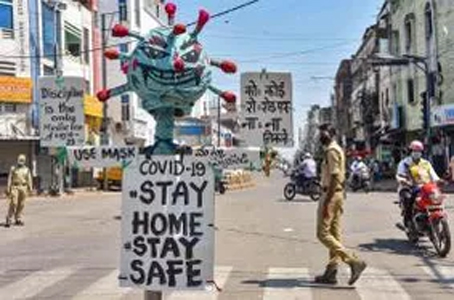NE NEWS SERVICE
NEW DELHI, MAY 28
Ahead of the completion of nationwide lockdown 4.0, Cabinet Secretary Rajiv Gauba on Thursday held a meeting with municipal commissioners and district magistrates of 13 COVID-19 hit cities in the country, including Ahmedabad, Mumbai, Delhi, Kolkata, and Chennai, officials said.
The meeting bears significance as these 13 cities are considered to be the worst Coronavirus affected locations and constitute about 70 percent of the positive cases in the country.
Chief secretaries and principal secretaries (health) of all states and Union Territories have attended the meeting through videoconference with the agenda of ”Public Health Response to COVID-19”.
Municipal commissioners of Mumbai, Chennai, Delhi/New Delhi, Ahmadabad, Thane, Pune, Hyderabad, Kolkata/Howrah, Indore (Madhya Pradesh), Jaipur, Jodhpur, Chengalpattu (Tamil Nadu) and Thiruvallur (Tamil Nadu) attended the meeting, a Home Ministry official said.
District magistrates or collectors of the 13 cities also joined the meeting, the official said.
The measures taken by the officials and the staff of the municipal corporations for the management of COVID-19 cases were reviewed in the meeting.
The central government has already issued guidelines on the management of COVID-19 in urban settlements.
Highlights of this strategy include work on high-risk factors, indices such as confirmation rate, fatality rate, doubling rate, tests per million people, etc, another official said.
The strategy defined the factors to be considered while mapping the containment and buffer zones, the activities mandated in containment zones like perimeter control, active search for cases through house-to-house surveillance, contact tracing, testing protocol, clinical management of the active cases.
It also dealt with the surveillance activities in the buffer zones like monitoring of Severe Acute Respiratory Illness (SARI) or Influenza-Like Illness (ILI) cases, ensuring social distancing, promoting hand hygiene, etc.
The Centre has been pushing for the geographic area of containment zones to be defined based on factors like mapping of cases and contacts, geographical dispersion of cases and contacts.
It said the area with well-demarcated perimeter and enforceability should be enforced.
For municipal corporations, residential colony, mohallas, municipal wards or police-station area, municipal zones, towns can be designated as containment zones, as appropriate.
The cities were advised that the area should be appropriately defined by the district administration and local urban body with technical inputs from the local level.
Along with the containment zones, buffer zones around containment zones also must be demarcated to break the chain of transmission. Maintaining high vigilance and monitoring in areas of old cities, urban slums and other high-density pockets along with the camps for migrant workers are other key factors for the COVID-19 strategy for the high-risk areas.
The nationwide lockdown was first announced by Prime Minister Narendra Modi on March 24 for 21 days in a bid to combat the coronavirus pandemic. It was first extended till May 3 and again till May 17. The lockdown has now been extended till May 31.












